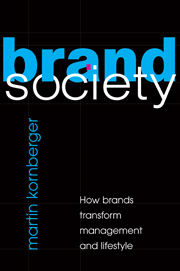4 - Identity
Published online by Cambridge University Press: 10 January 2011
Summary
Trailer I
In the second part of this book, we argue that brands offer new, compelling ways of thinking about managing organizations. We argued in Chapter 2 that brands are often understood as new management tools or corporate catalysts that restructure organizations. While we do not always share the optimism of some of our colleagues that brands will make organizations more effective, we want to explore the implications and unintended consequences for management practice and theory.
This chapter draws on the notion of identity and argues that brands are identities-in-action that allow stability to be maintained while simultaneously enabling change. Chapter 5, ‘Culture’, takes as its point of departure the idea that brands are enacted in the behaviour of organizational members. The brand becomes the ‘way we do things around here’; in short, an organization's culture and its brand become intrinsically related to each other. Finally, Chapter 6 explores the way external, open-source communities crystallize around brands and co-create new ideas, services and products. In this view, the brand becomes the medium that connects internal cultures and external communities.
Identity, culture and innovation are but three concepts that are transformed through branding. Whether these transformations create more effective or fairer organizations I cannot say a priori from the comfort of my office chair, but it seems tempting for many writers to understand brands as the latest tool slotting neatly into the manager's repertoire, improving efficiency and effectiveness. Brands could have ambiguous effects on management practice, however.
- Type
- Chapter
- Information
- Brand SocietyHow Brands Transform Management and Lifestyle, pp. 87 - 114Publisher: Cambridge University PressPrint publication year: 2010

